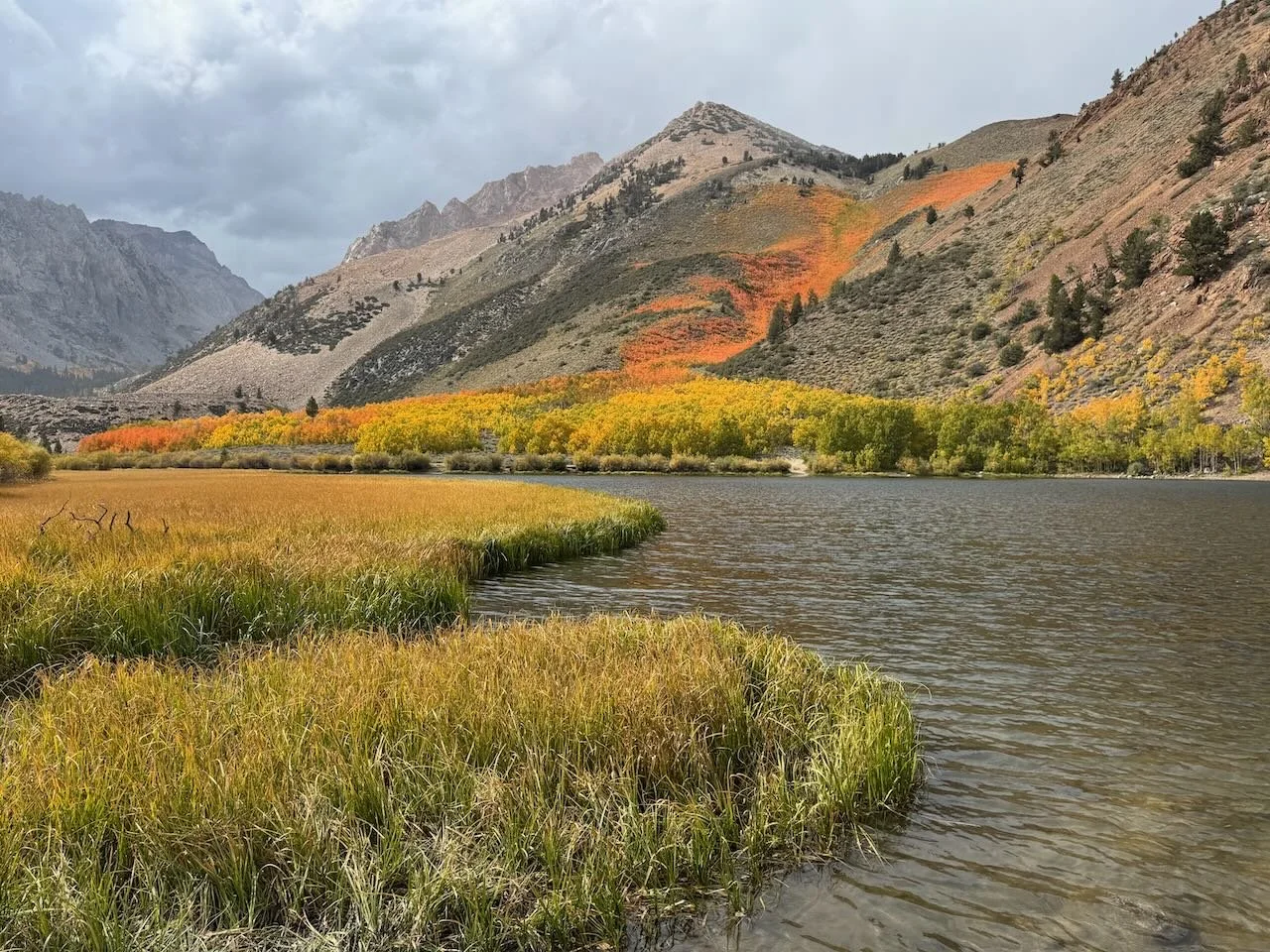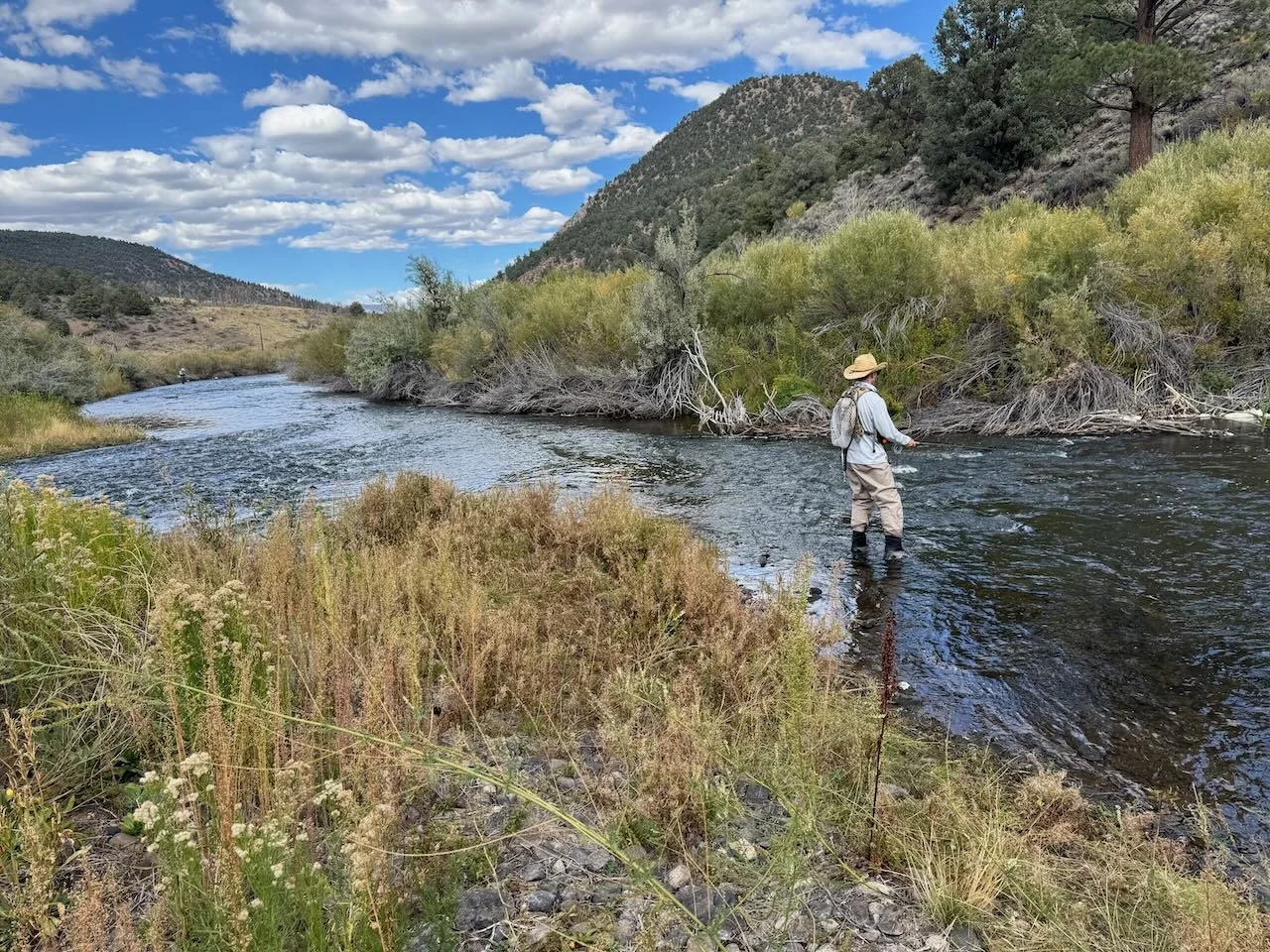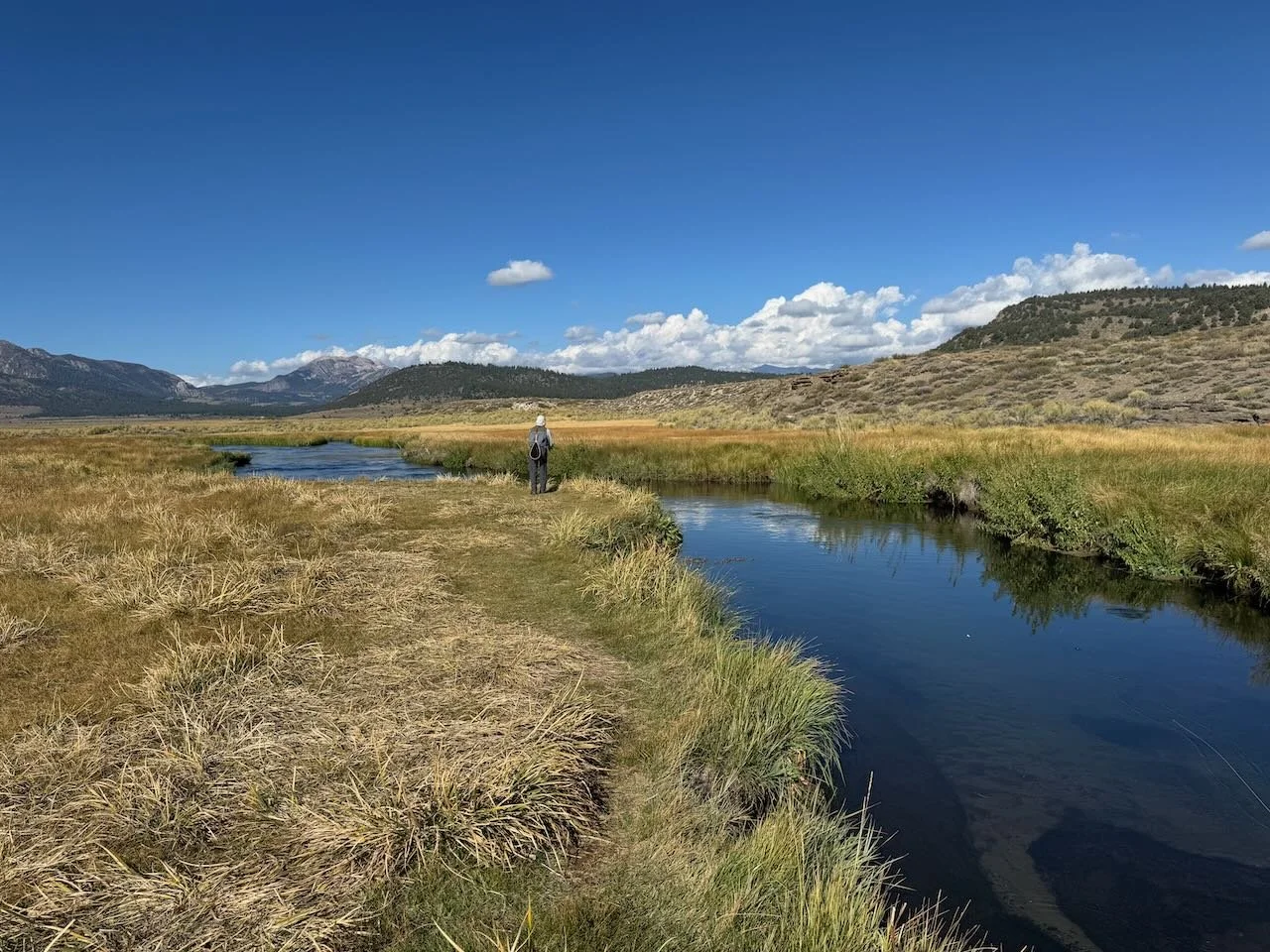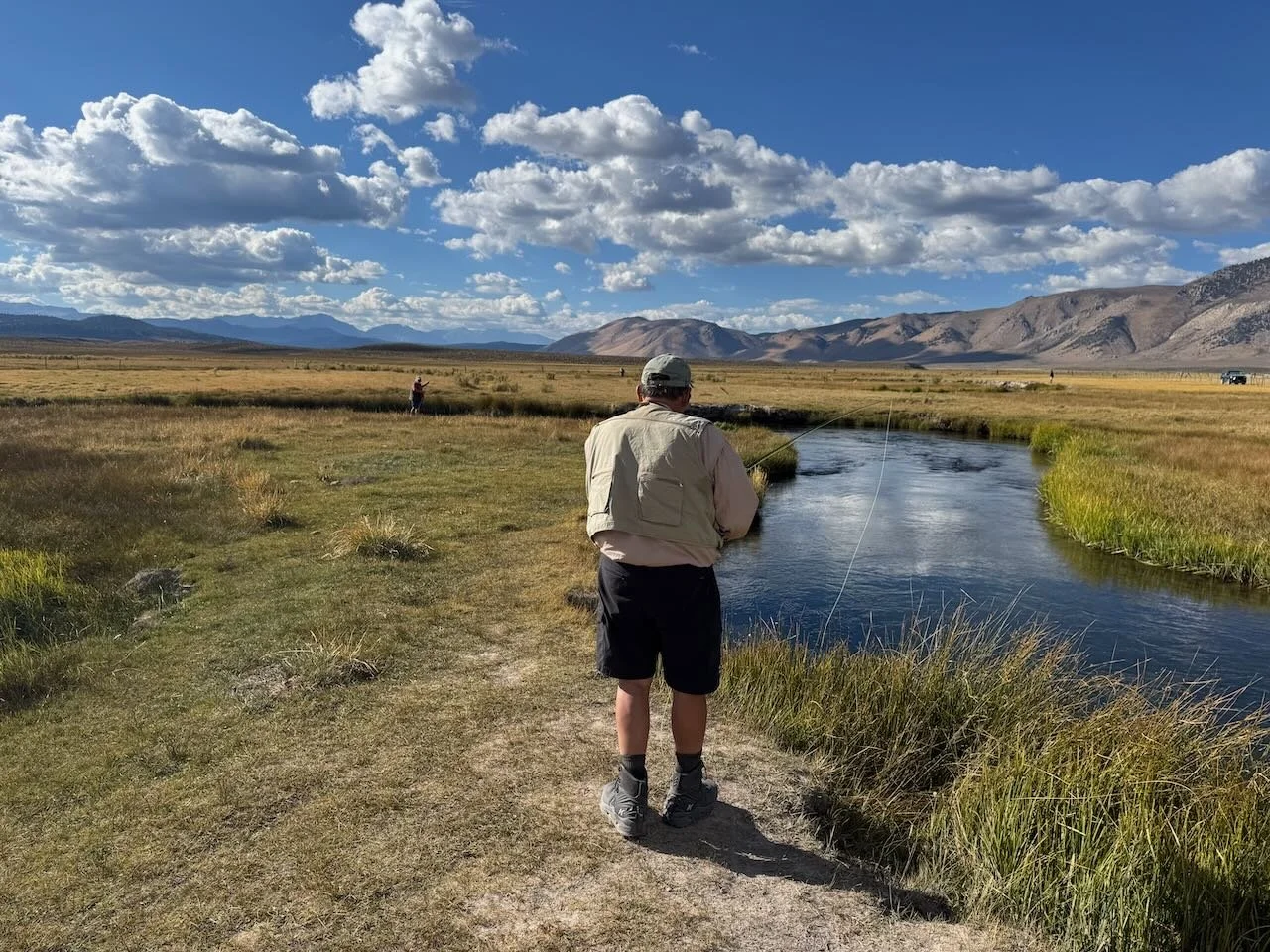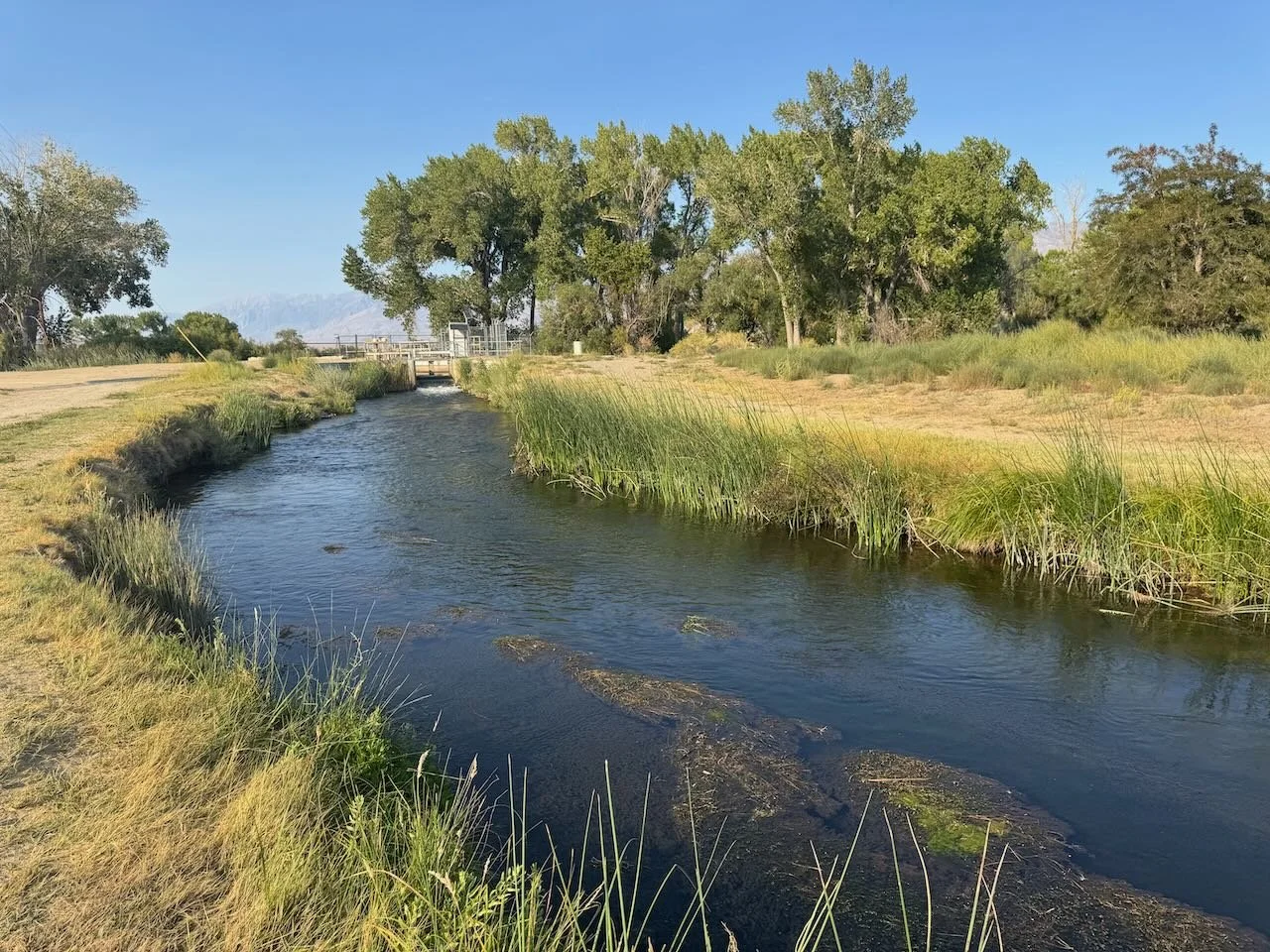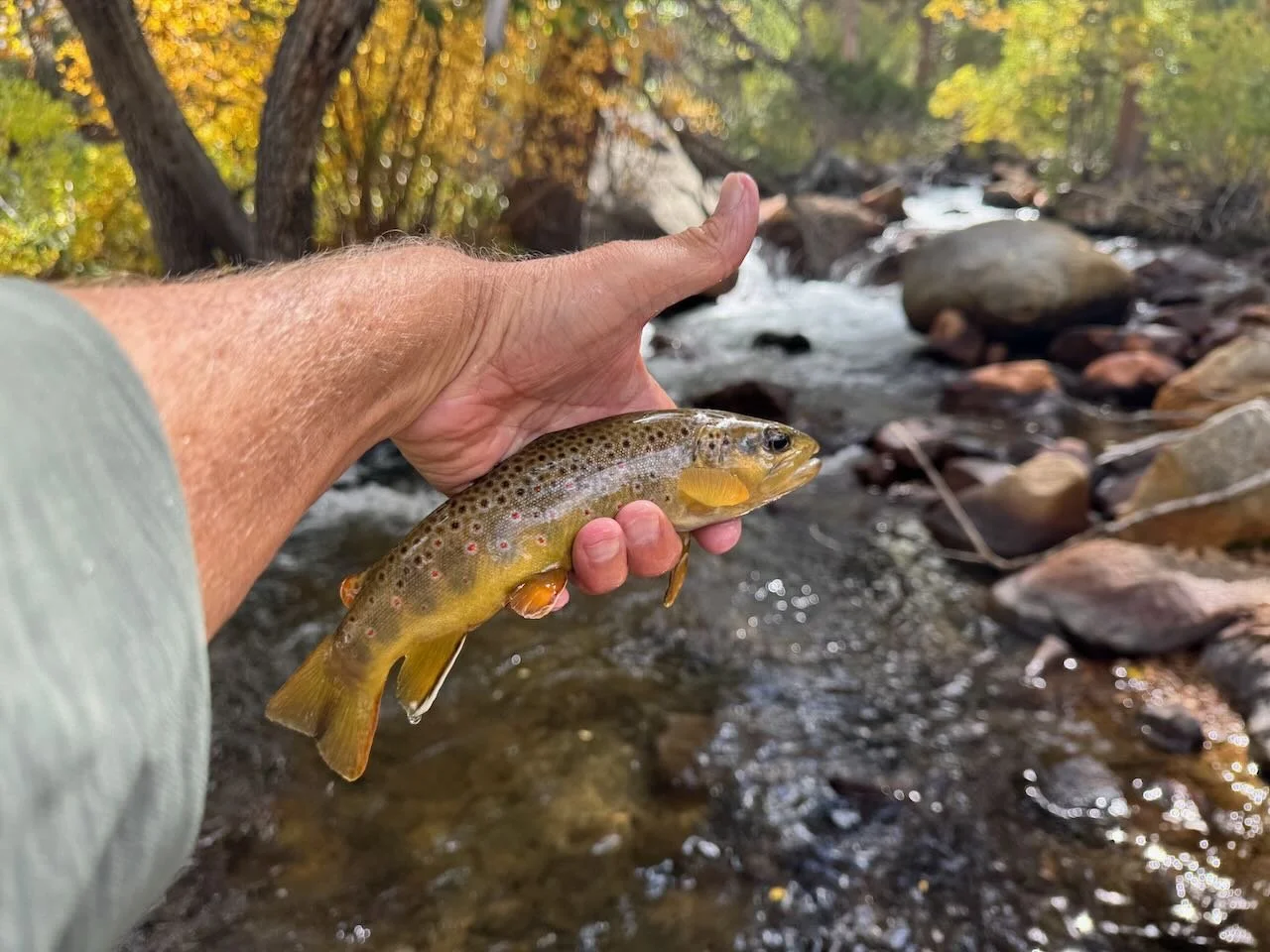We are in the middle of my favorite month, SeptOct. There are two weeks left to get up to the Eastern Sierra and enjoy the best month of the year in the Eastern Sierra. Nights are getting cold; quacking aspens are turning yellow and flows in the lower Owens River are at wadable levels. Trophy trout are running upstream from Eastern Sierra lakes. Reminder that several Eastern Sierra streams close to fishing on October 1st to protect spawners. Fall colors will peak this weekend at the 9,000 foot level. Trout are feeding on the nymphs and adults of mayflies, caddisflies and midges. Now is the time to strip streamers for trophy trout in the Eastern Sierra rivers.
Fall colors are peaking at the 9,000 foot level this weekend and fishing in the freestone streams and upper elevation lakes are producing wild rainbow, brown and brook trout.
East Walker River:
Wading on the East Walker River is perfect right now as the flows are low enough to wade and high enough to offer lots of pockets and holes to fly fish. Euro nymphing with size 12 stoner nymphs, size 18 olive quilldigons, and size 16 Frenchie’s are producing rainbows and browns from six to 14 inches. Nymphing under an indicator with size 18 olive quilldigons, size 18 bead head flash back pheasant tail nymphs, size 16 bead head flash back gold ribbed hare’s ears and size 16 SOS nymphs are producing six to 14 inch trout for the fly fisher that sets every movement in the indicator. Covering lots of water with streamers for that one or two trophy trout grab is working right now. Fish with olive slumpbusters, black wooly buggers, marabou muddlers and brown bunny leeches in sizes 6 and 10. There are lots of crayfish in the water right now. Try nymphing or stripping a size 6 or 10 Clouser swimming nymph in crayfish brown.
Stripping streamers under the cover of stream side vegetation, in the deep pools and holes is where the trophy trout live and will take your streamer as it swims by them.
Lower Owens Rive
Wild Trout Section:
Lower Owens River flows are holding at 125 CFS for now. This is the perfect level to wade and fly fish. There is a mid-day mayfly hatch bringing a few trout to the surface. Indicator nymphing and Euro nymphing is the methods that are producing wild brown and rainbow trout from four inches to 12 inches. Nymph with size 18 olive quilldigons, size 18 bead head flash back pheasant tail nymphs, size 16 hot spot pheasant tail nymph, size 16 SOS nymphs, size 16 green/gold brassies and size 16 midges in tiger and zebra coloration. Afternoons have been hot and wet wading is more comfortable than wearing waders.
Don Sabatino from Riverside Euro nymphing on a Tenkara rod on the lower Owens River below Pleasant Valley Campground.
Hot Creek
Interpretive Site:
The tropical storms have been bringing precipitation to the Eastern Sierra and it has slowed down the trico hatch on some days. Most days start by fishing with a size 22 female trico parachute on a three foot 6X monofilament tippet. When the trout quit taking the parachute it’s time to switch to a size 22 trico spinner. On overcast days look for a blue wing olive hatch to start mid-morning and fish with a size 20 blue wing olive parachute. Most days fly fishing for the hatches on Hot Creek are over by noon.
The morning trico hatch has the wild brown and rainbow trout feeding on the surface for female tricos.
Hot Creek
Canyon Section:
The canyon is my favorite spot to fish on Hot Creek. It requires good casting to make the drifts necessary to get the fish to take your nymphs and dries. Mornings start with the female trico hatch and fly fishers should be on the water fishing with a female trico parachute by 8:30 A.M. When the trout quit taking the parachute and are still feeding heavily on the surface switch to a size 22 trico spinner. When the hatch is over try fly fishing with nymphs between the weed beds and in the openings in the riffles and holes. Fish with size 18 olive quilldigons, size 18 bead head flash back pheasant tail nymphs, size 20 SOS nymphs and size 20 midges in tiger and zebra coloration.
Darth Veynar indicator nymphing the upper Owens River with a stoner nymph and green/gold brassie working on hooking up with a trophy rainbow trout.
Upper Owens River
Above Benton Crossing Bridge:
They’re here! Trophy rainbow and brown trout have moved into the Owens River above Benton Crossing Bridge. These trophy trout are taking size 12 stoner nymphs, size 12 green/gold Prince nymphs, size 12 gold ribbed hare’s ears variations and size 14 copper Johns fished in the deep holes, deep runs and cut banks. Stripping olive and white rabbit strip matukas, olive slumpbusters, olive wooly buggers and marabou muddlers in sizes six and 10 are being savagely hit by trophy trout. Key to success is to cover lots of water looking for that one or two trophy trout that wants to take your streamer. There is a good number of six to 10 inch wild browns and rainbows feeding on tricos in the morning and caddis in the afternoon. Use size 20 trico female parachutes in the mornings and switch over to a size 18 elk hair caddis for mid-day dry fly fishing. Nymphing with size 16 midges in zebra and tiger coloration, size 18 olive quilldigons and size 18 bead head flash back pheasant tail nymphs are fooling the resident young of the year trout.
Tenkara Tunki rods held their annual Bishop Tenkara Boot Camp and the participants were able to catch trout out of the canal on nymphs.
Bishop Creek Canal
Behind Bishop Veterinary Hospital:
For the fly fisher thoroughly covering the sandy lanes between the weed beds there are wild browns and stocked rainbows to be caught. Nymphing with size 18 olive quilldigons, size 18 bead head flash back pheasant tail nymphs, size 16 bead head flash back gold ribbed hare’s ears, size 16 green/gold brassies and size 16 midges in zebra and tiger coloration. A big group of Tenkara Boot Camp participants fished Bishop Creek Canal Sunday morning and several tenkara anglers caught trout on nymphs.
Fall colors, wild brown trout, bush whacking Bishop Creek and getting rained on is a perfect fall day on Bishop Creek.
Bishop Creek Canyon
Middle Fork:
North Lake, middle fork of Bishop Creek and Weir pond all have great fall colors and should peak by the weekend or early next week. Fly fishing in Bishop Creek has been a blast for stocked rainbows, wild brown and wild brook trout. Fishing a size 16 stimulator and a size 16 tiger midge in the pockets and pools of the creek has been the effective method of fooling the trout. Best dry fly to fish with is your favorite dry fly as you will fish it with the most confidence. High visible and high floating flies like stimulators, Adams parachutes, elk hair caddis and Royal Wulff’s are great dry flies for Bishop Creek. For the nymphs fish with size 16 bead head flash back gold ribbed Hare’s ears, size 18 bead head flash back pheasant tail nymphs, size 16 Prince nymphs, size 16 green/gold brassies and size 16 midges in zebra and tiger coloration. The fun part of fishing the creek is walking along the brush lined banks looking for that pool or pocket to drift your flies through. Then watching the dry fly move and setting the hook on a nymph eating trout or watching a trout rise to the surface to take your dry fly. Bush whacking the creeks that drain the Eastern side of the Sierra is one of my favorite ways to fly fish.

